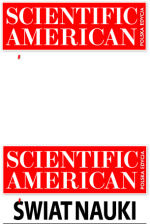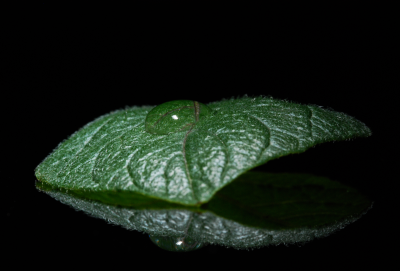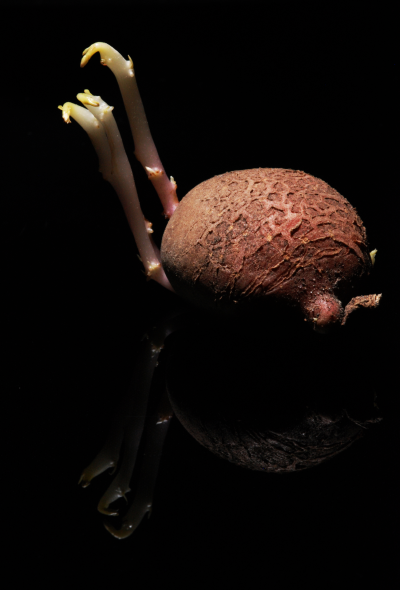 2006
2006
 2008
2008
 2010
2010
 2012
2012
 2014
2014



 |
Potato blight – hope in resistance genes
‘Expression regulation study, identification, mapping and pyramiding R genes conferring resistance of potato to Phytophthora infestans’
Iga Tomczyńska – author of photographs, Deadly drop. Drop with sporangia suspension of P. infestans Hidden beauty. A tuber of resistant individual |

|
Description popularizing the research project
Potatoes are not supposed to be enchanting although their blossom is quite nice. It is a vegetable, which, together with rice, corn and other cereals, is basic food of humanity. Fields of the nutrient plant can be found all around the world, at every latitude and longitude. In many places, they are eaten every day as the main dish, in countless forms, according to various recipes, in a plethora of local varieties. All the humanity appreciates their taste and nutrient value.
Unfortunately, not only people value potatoes. The best-known potato fan is the Colorado potato beetle. Their massive infestations do not leave a single uneaten leaf in the fields where they occur. The next species that causes enormous losses in yield are oomycetes, fungus-like organisms referred to as pseudofungi. The biological names of the parasite are illusory. Its attacks on the aboveground parts of plants are quite real leading to their necrosis. Underground parts – rhizomes and bulbs are not safe too. Even when they are collected, they are still in danger. Endospores of oomycetes reveal themselves when the bulbs are stored. The bulbs rot covered with mould. Oomecytes perfected the way they are transmitted. Shoots and leaves are attacked from the air by spores carried with the wind. When the vegetative season is abundant in rains and the soil is soaked with water, the underground parts of the plants are attacked by zoospores. Fight against the pathogen requires use of fungicides. Simultaneously resistance of potatoes to the parasite is being investigated. In the cell nuclei of close relatives of potatoes, researchers found certain genes. Thanks to them, the plants are immune to the blight. Maybe it will be possible to equip potatoes with the same genes too to outsmart and beat their real archenemy the pseudofungus.
Abstract
The aim: 1) Expression regulation study of gene Rpi-phu1. 2) Search for Rpi-phu1 homologs in wild Solanum species. 3) Mapping the resistance to P. infestans of potato cultivar Sárpo Mira and development of DNA markers useful in marker-assisted selection of potatoes possessing both Rpi-phu1 and Rpi-srp1 genes.
Research methods 1) Inoculation of plants with sporangia suspension of P. infestans. Plant incubation in a climatic chamber at the temperature and humidity conditions favorable for P. infestans. RNA isolation, reverse transcription of polymerase chain reaction and real time PCR using α-tubulina as a reference gene. 2) Study of 51 clones, which belong to 13 wild Solanum species using PCR specific for sequence of Rpi-phu1 gene to DNA. Sequencing obtained PCR amplicon. 3) Inoculation of leaflets with sporangia suspension of P. infestans. Evaluation of resistance according to the extent of lesion development. PCR with primers specific for DNA sequence from potato chromosome XI and comparison with results of resistance test.
Results: 1) Expression level of Rpi-phu1 gen depends on ploidy level and genetic background of plants and it changes in consecutive days after inoculation. 2) Sequence of Rpi-phu1 homolog from Solanum ruiz-ceballosii clone was obtained. Sequence data shows its identity in 93% with Rpi-vnt1.2 and Rpi-vnt1.3 genes derived from S. venturii and pseudogen, which is similar to Rpi-vnt1.1 with S. microdontum. 3) Nine molecular markers were found to be linked with phenotypic resistance results. The nearest molecular marker, 45/XI, is located at the distance of 6.7 cM from the resistance gene.
Patronat honorowy
Leszek Jodliński
Dyrektor Muzeum Śląskiego w Katowicach
Zygmunt Łukaszczyk
Wojewoda Śląski
Jan Malicki
Biblioteka Śląska
Piotr Uszok
Prezydent Katowic
Adam Matusiewicz
Marszałek Województwa Śląskiego















